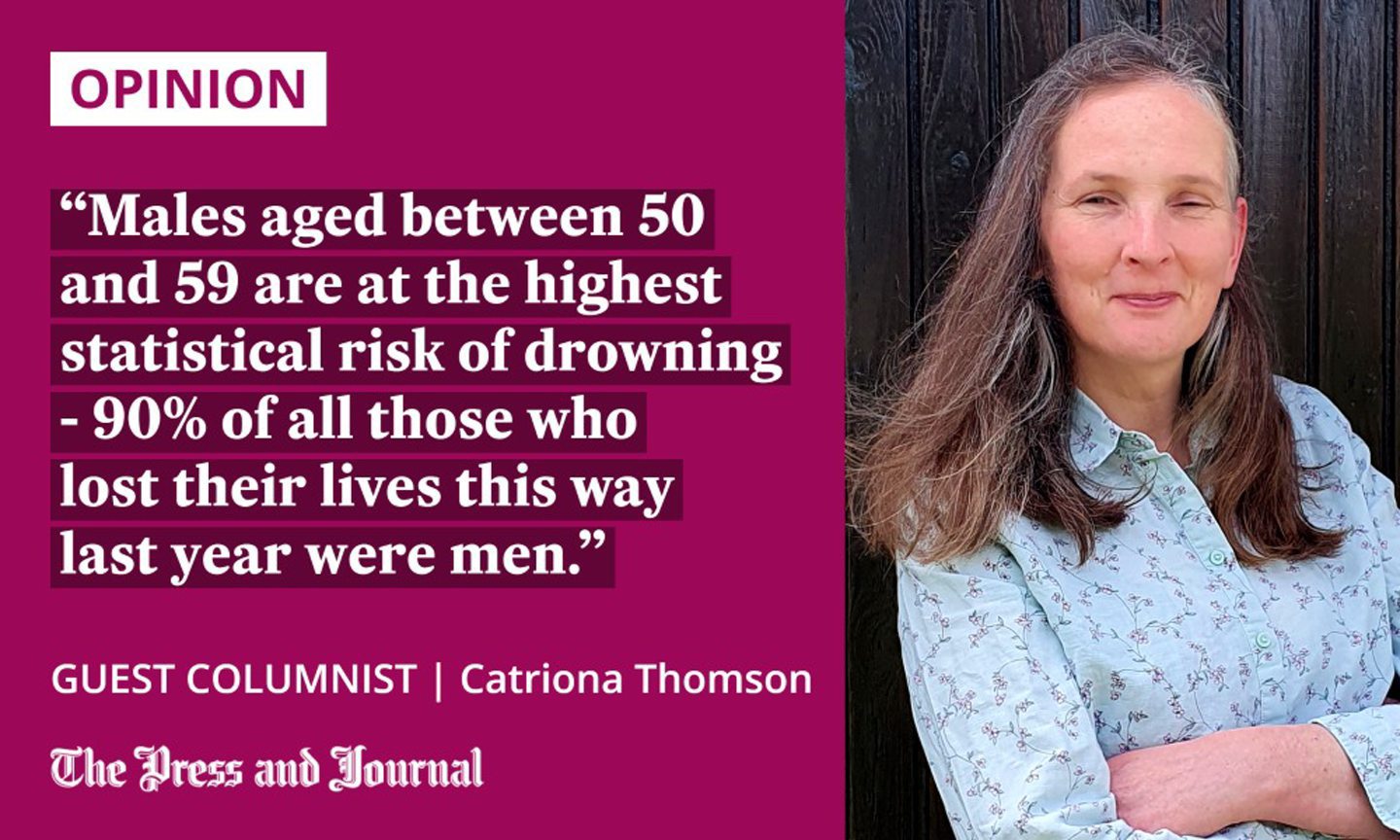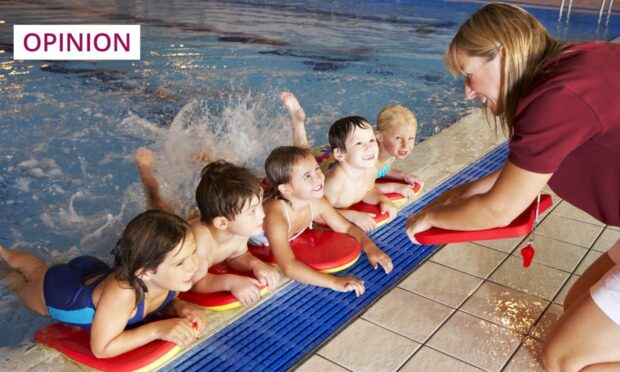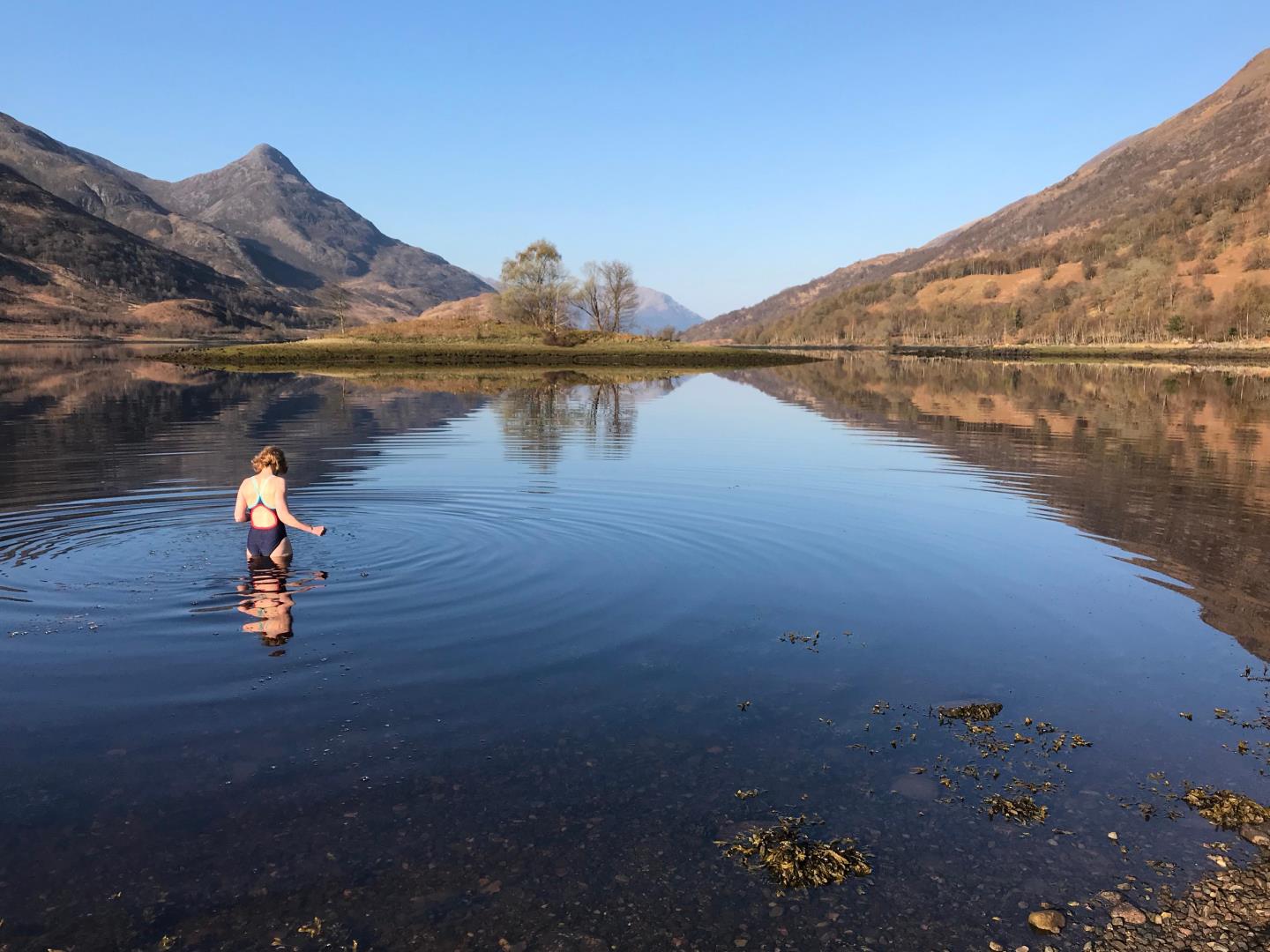Growing up in the 1970s, one of the tried-and-tested methods for teaching your kids to swim was to take them to the beach, wade out until they were just about out of their depth, and let them doggy paddle their way back to shore – a brutal case of sink or swim.
By the time school swimming lessons at the local swimming baths were on the cards, I was terrified. I recall “the tank”, where non-swimmers were initiated and you’d learn the basics before being let loose in the shallow end.
The next progression was at the deep end, where the swimming instructor held a long pole with a hoop at the end. The second you took that leap of faith and jumped towards the ring, they’d cruelly whisk the hoop away. Despite these methods, I learned to swim.
So, I wanted my daughters to learn from a young age to be strong, confident swimmers. I guess all those early-morning swimming lessons and trips to the pool paid off: they both swim like porpoises. It was vitally important to me to know that my two would be as safe as possible around water, should anything happen.
The images of US synchronised swimmer Anita Álvarez hanging lifeless underwater before being dragged to the pool surface by her coach last year demonstrate just how quickly things can escalate. But accidents don’t always happen in swimming pools when athletes are pushing themselves to the limit and life-saving equipment and personnel are at hand.

In the latest figures released from the National Water Safety Forum (NWSF) in the Water Accident Incident Database, the Highlands and Aberdeenshire are at the top of the table for water-related accidental deaths.
In Scotland last year, there were 97 water-related fatalities, with a marked increase in suspected suicides. You might expect the majority of them to have happened at the coast, but 62% of accidental fatalities happened inland on open water.
Males aged between 50 and 59 are at the highest statistical risk of drowning – 90% of all those who lost their lives were men, and 18% of fatalities had the presence of drugs or alcohol detected.
Even the best swimmers can be caught out, but running or walking by water is the most dangerous activity, causing a total of 18 deaths in 2022. Five deaths happened as a result of sub-aqua diving, while motorboating and angling each resulted in four deaths. Tragically, rescuing an animal caused two people to die in water in Aberdeen and Aberdeenshire last year.
Follow the Water Safety Code
Sheena Harper, Scottish ambassador for the Royal Life Saving Society UK says: “In 2022 we sadly saw 45 people lose their life to accidental drowning in Scotland, with peaks in both July and August as we saw temperatures rise and periods of heatwaves.
“We know that many people may head to the water in an attempt to cool off. However, we want to ensure they are equipped with the best water safety advice so they can enjoy their summer in and around the water.”
And Scottish Fire and Rescue Service station commander James Sullivan, also the chair of Water Safety Scotland, agrees. He points out: “In Scotland, our waters are cold all year round, so it’s imperative people are fully aware of the threat of cold water shock. It can be fatal and can take hold within a matter of seconds.
“If you do find yourself in the water unexpectedly, or struggling, then following the Water Safety Code can be the difference between life and death.”
The Water Safety Code advises anyone in difficulty to lie on their back, extend their arms and legs, and float. After 90 seconds or so, the symptoms should pass, then shout for help or swim to safety.
Swimming lessons should be made a priority
I want everyone to be able to enjoy the benefits of being around water safely. So, this summer, before you launch yourself into a pool or river, just take a second to consider what you would do if an accident happened. Are you aware of all the risks and how long would it take for help to arrive?
Drowning Prevention Week (June 17-24) is a yearly campaign, and is aimed at reminding people of the dangers and risks that come with water in the summer.
My concern is that mounting financial pressures caused by the cost-of-living crisis, and the closure of municipal pools will mean that fewer people will learn to swim
The NWSF is a voluntary UK network that is working hard to decrease water-related deaths and harm. They hope to reduce accidental drowning fatalities in the UK by 50% by 2026. They, like me, would like to see every child have the opportunity to learn to swim and receive water safety education at primary school.
My concern is that mounting financial pressures caused by the cost-of-living crisis, and the closure of municipal pools will mean that fewer people will learn to swim. If we want the drowning figures to continue to fall then that is something we cannot let happen.
Catriona Thomson is a freelance food and drink writer


Conversation